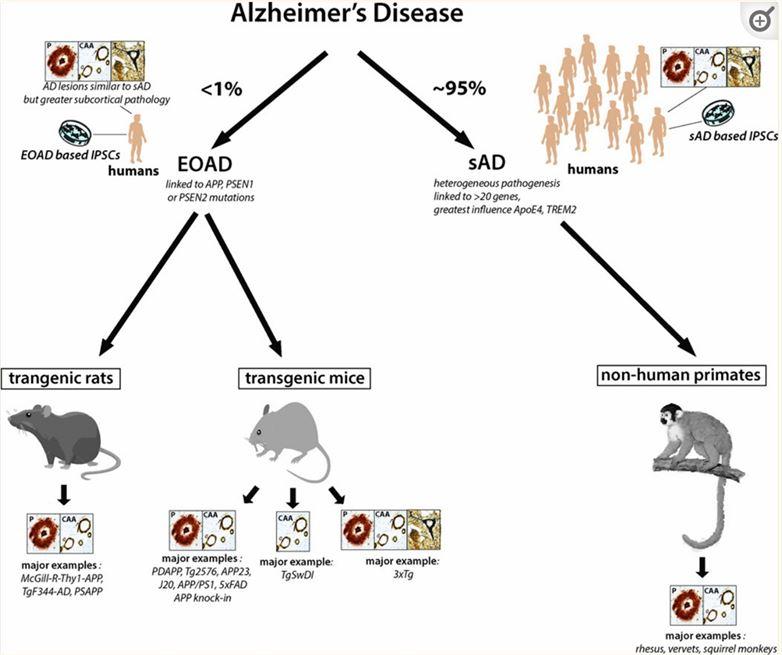Alzheimer's disease is a neurodegenerative disorder that often occurs in old age, with typical cognitive impairment and behavioral impairment as the main clinical manifestations. The pathology is mainly characterized by the formation of neuronal fiber tangles from abnormally phosphorylated Tua protein in brain cells and the formation of age spots from extracellular interstitial beta amyloid deposits. The specific etiology and pathogenesis of Alzheimer's disease are still unclear, and effective early interventions and treatments are lacking. Therefore, basic research to explore the pathogenesis of AD is important for the prevention and treatment of the disease.
Application of Mouse Models in Alzheimer's Disease
Mouse models are one of the most important research tools in the search for new therapies for Alzheimer's disease.
- Mice are highly phylogenetically protected from humans in the structure and function of hippocampal and internal olfactory cortex circuits that mediate episodic memory and are vulnerable in Alzheimer's disease.
- Mice have a similar number of genes and a considerable amount of chromosomal homology to humans.
- The mouse model provides a sufficiently simplified system to facilitate experimental manipulation.
- Mouse models of Alzheimer's disease are useful as a tool for target identification and validation.

Fig. 1 Schematic diagram of the main animal models of Alzheimer's disease. (Drummond, 2017)
Commonly Used Alzheimer's Diseases Models
Animal models of Alzheimer's disease are essential to better understand the pathogenesis and to assess the potential of new therapeutic approaches.
The neuroscience experts at Our company, fully understand the strengths and limitations of each animal model of Alzheimer's disease. We offer our clients a multi-strategy approach to modeling. We provide models that well simulate not only the major pathological features and neurobiochemical and other changes in AD, but also the behavioral changes in AD.
The Alzheimer's disease models we offered include, but are not limited to the following.
- Aging animal models
- Chemical injury animal models
The model was established mainly by injecting specific substances into the brain, subcutaneously or intraperitoneally of model rats.
- Transgenic animal models
Transgenic animal models are the most widely used models in AD research. Our company offers transgenic animal models including but not limited to the following.
Evaluation Methods for The Alzheimer's Disease Models
Behavioral researches are very important indicators used to evaluate neurodegenerative diseases, including AD, and can be used to assess the degree of similarity of models to human diseases. Our company uses a variety of advanced experimental equipment and methods for testing the behavior of AD models.

